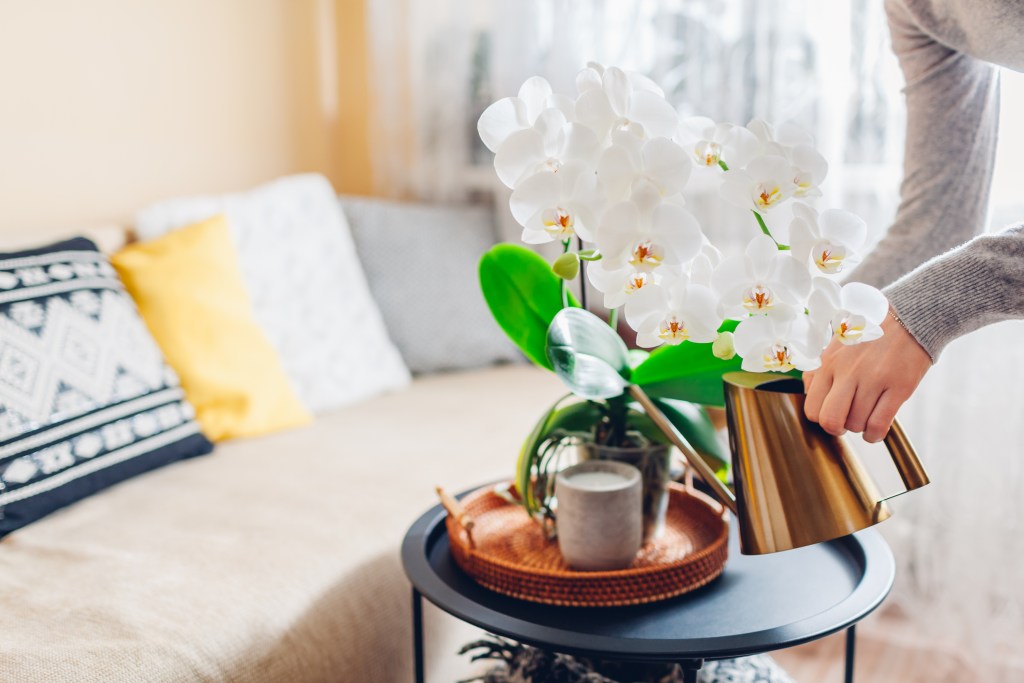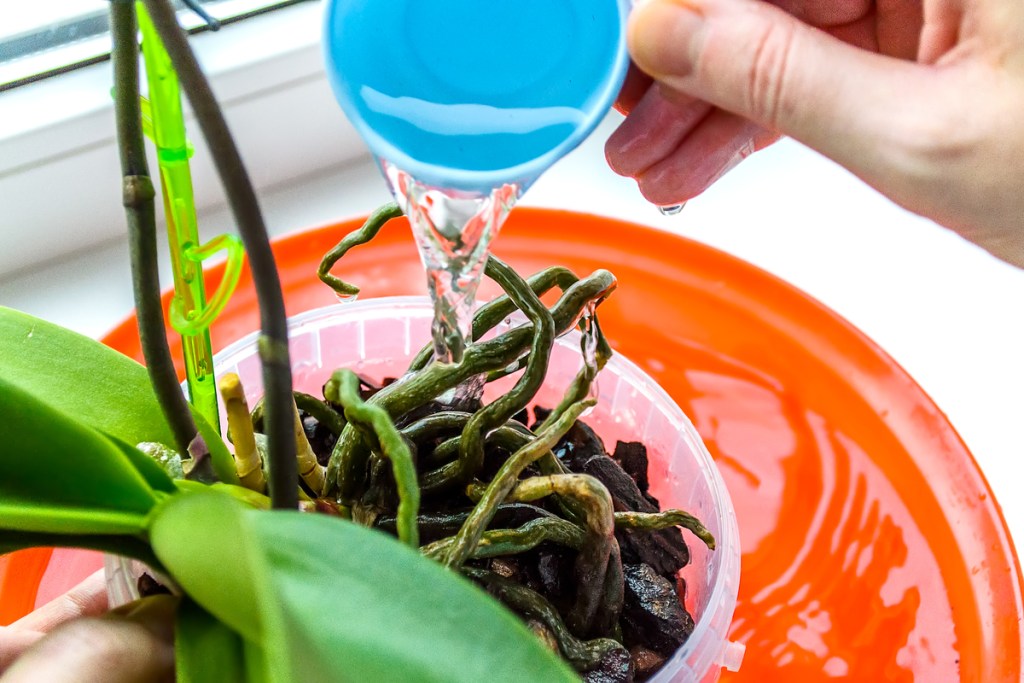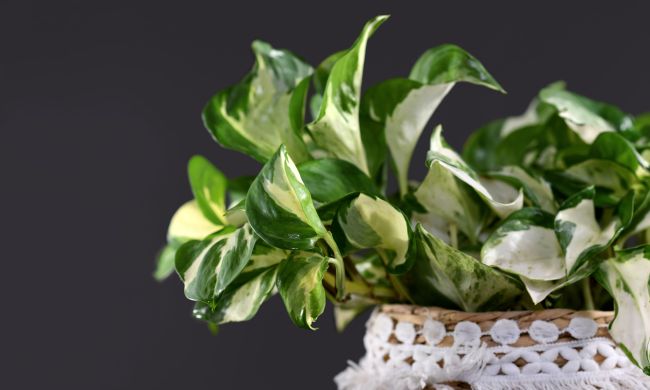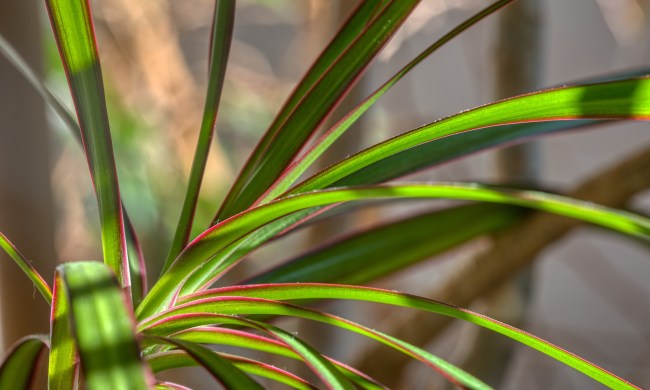Orchids are notoriously difficult to grow, and one care aspect that may be tricky to nail is fertilizing them. These blooming plants aren’t heavy feeders, but they do appreciate consistent feeding. To help orchids grow healthy leaves and blooms, it’s a good idea to fortify their growing medium with nutrients and minerals. By the same measure, you don’t want to overfeed your orchids, which can result in weaker plants that are prone to diseases. Getting your orchids feeding routine just right helps you nourish healthy and productive plants — here’s everything you need to know about how to fertilize orchids.

Which fertilizers to use for orchids
Using orchid fertilizers
There’s no shortage of choice when it comes to nourishing your orchids, as you have a wide range of fertilizer options available. You’ll find plenty of specialized orchid fertilizers, including mists, spikes, and water-soluble plant food. With orchid mists, all you have to do is spray your leaves and roots with the solution. On the other hand, spikes and water-soluble plant food work more like conventional houseplant fertilizers that slowly release or dilute into the soil with water.
Using balanced fertilizers
In general, a balanced fertilizer (like a 20:20:20 one) where the nitrogen, phosphorus, and potassium ratio is even should be sufficient for your orchid. This type of fertilizer tends to have minor nutrients, such as manganese, calcium, and sulfur as well, so you’ll get more than just the three major elements. You can also look into bloom boosters where the phosphorus and potassium values are higher, but these fertilizers aren’t strictly necessary for a healthy orchid.
If you grow your orchids in bark (Note: Orchids are essentially air plants in nature), it’s helpful to apply a fertilizer high in nitrogen, as a bark medium typically contains less nitrogen than a standard potting mix. But if you want to encourage blooms, it may be better to use a balanced fertilizer or one with a lower nitrogen dosage, as nitrogen helps grow leaves rather than flowers.

When to feed orchids
Do you feed orchids all year round?
How often should you feed orchids? You want to fertilize your plant when it’s actively growing. Orchids appreciate regular feeding, especially in the spring and summer. With that said, you can cut back on fertilizing your orchids during the dormant season — a once-a-month cadence is more than sufficient around fall and winter. During this time, many orchid collectors may actually stop fertilizing their orchids altogether, so their plants can reserve energy for the growing season. (And of course, you’d be saving money on fertilizer by skipping those winter feedings!)
Do you feed orchids when they are in bloom?
It’s not necessary to feed orchids when they’re flowering because they’ll be more focused on blooming rather than growing. If you plan to feed a flowering plant, go with a weak fertilizer application. You can cut back your feeding ritual to once a month or skip it altogether until all the blooms have faded.

How to feed orchids
Many orchid growers take a “weekly, weakly” approach; basically, they dilute their balanced fertilizer at a quarter of the recommended strength and feed their orchids weekly instead of going with a full dose monthly. If you choose this method, water your orchids with a fertilizer and water solution thoroughly and avoid getting it on leaves or flowers. Then, throw out any excess solution that piles up at the bottom of your plant saucer.
You can also spray your orchid roots and leaves with an orchid mist once a week, making sure to avoid the flowers. An orchid plant food spike is another feasible option; this type of plant food slowly releases nutrients into the growing medium, and you only need to replace the fertilizer every two months.

How to troubleshoot overfertilized orchids
Overfertilizing can encourage soft leaves to develop instead of vigorous blooms. Plus, overfertilizing orchids can make them susceptible to disease and burn their leaves and roots. Telltale signs of overfed orchids include dried roots, a white substance on the leaves, and a white crust on the soil surface. If you suspect your orchids may be overfertilized, leach the soil by flushing it out with water and pause fertilizing for at least a month.
At the bare minimum, orchids need humidity, bright, indirect light, and well-draining soil to stay alive. That said, fertilizing is the extra step that can have your orchids go from merely surviving to actually thriving. From bloom boosters to mists, there are many specialized orchid fertilizers out there, but you can always rely on a diluted balanced fertilizer. When in doubt, rely on the “weekly, weakly” adage for happy orchids. Even if it’s not strictly necessary, feeding your orchids helps them put out healthy flowers and leaves.



